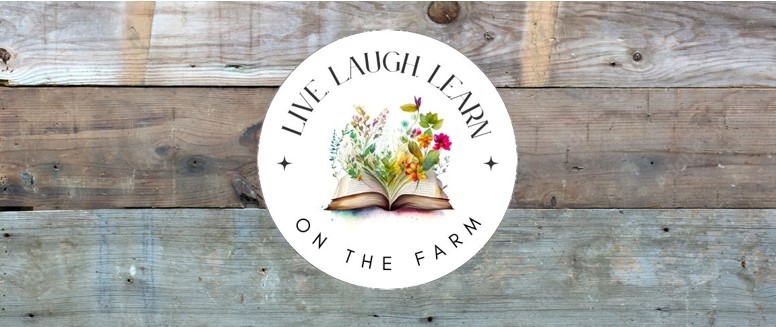Hot Summer Days
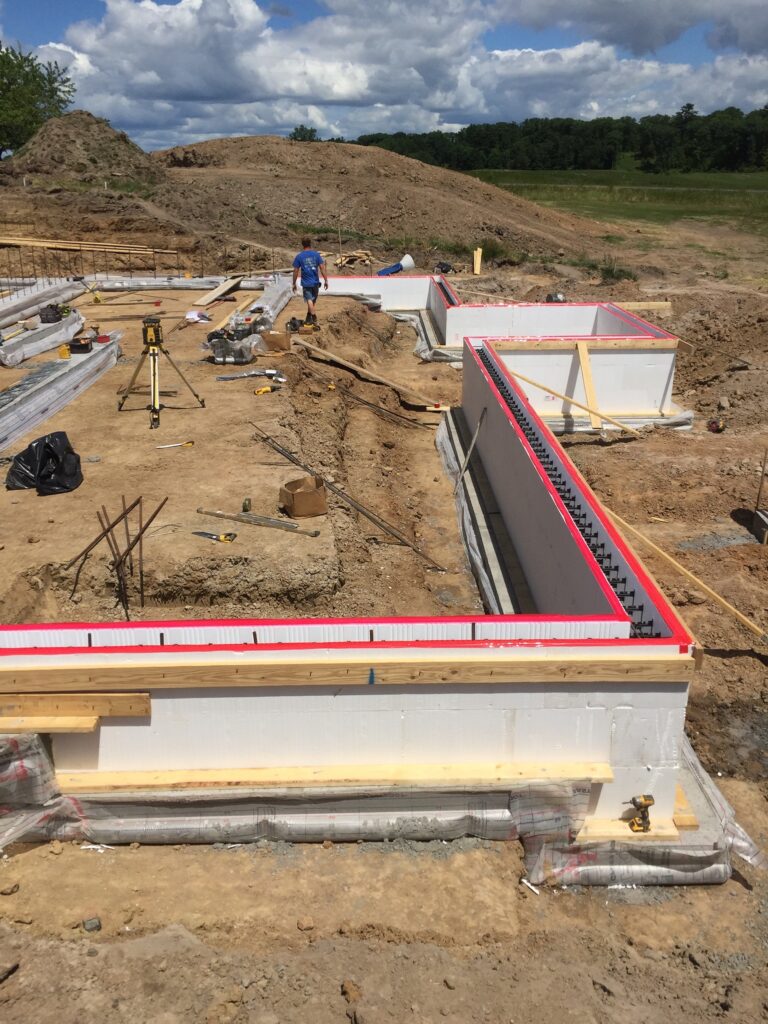
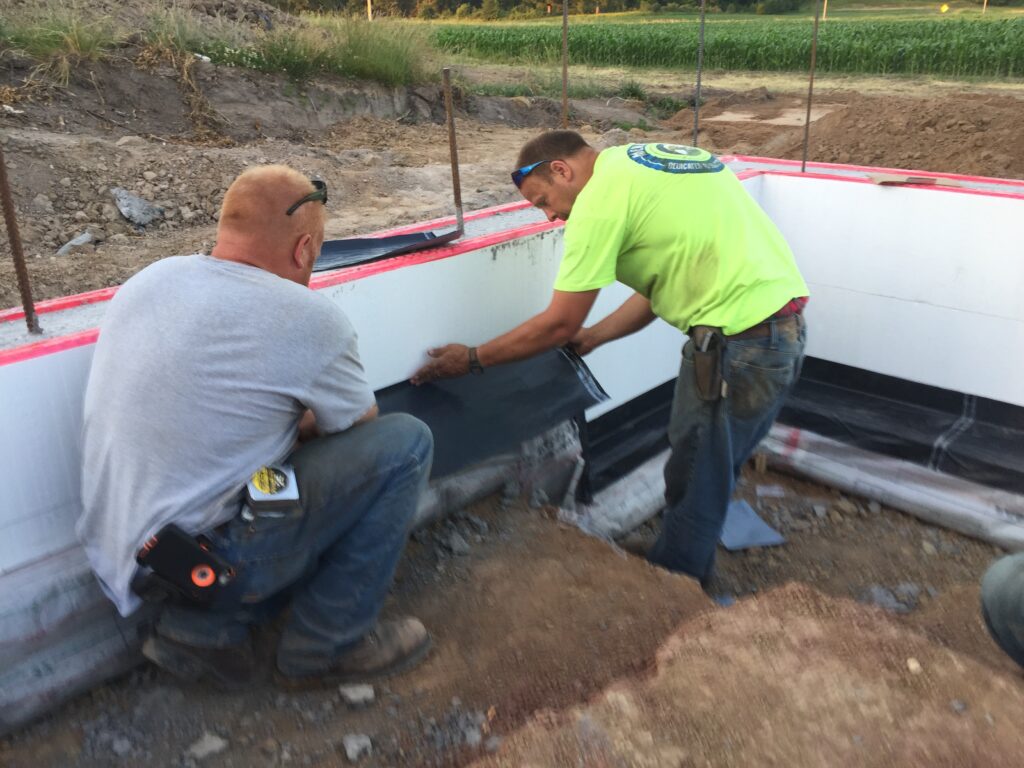
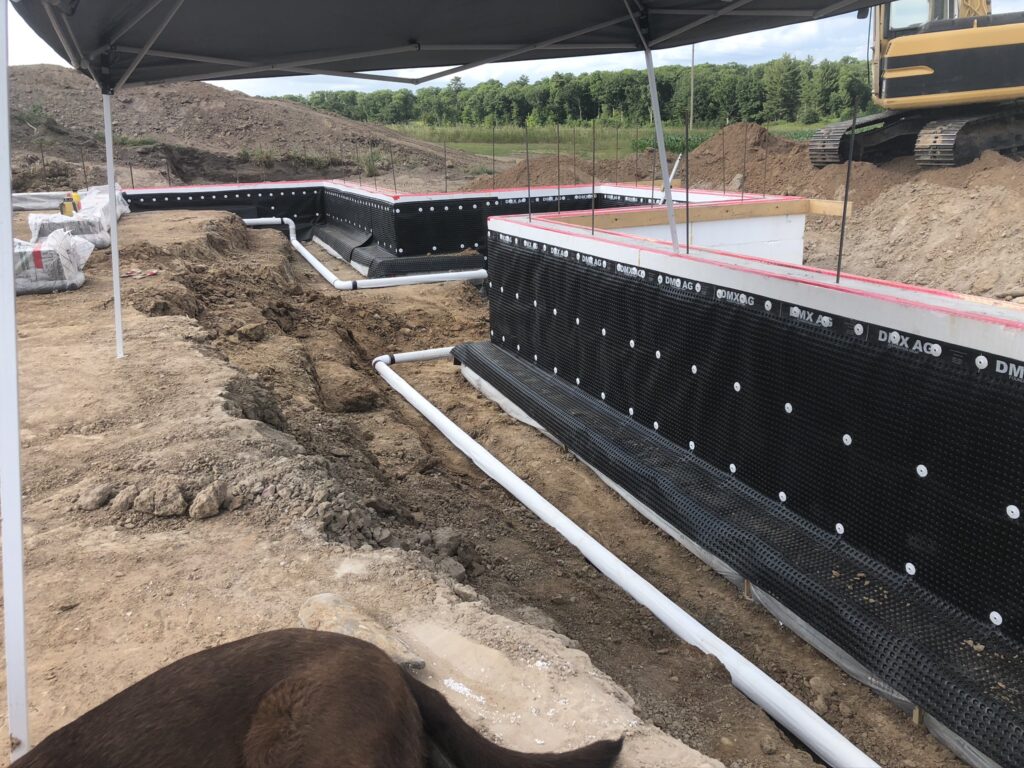
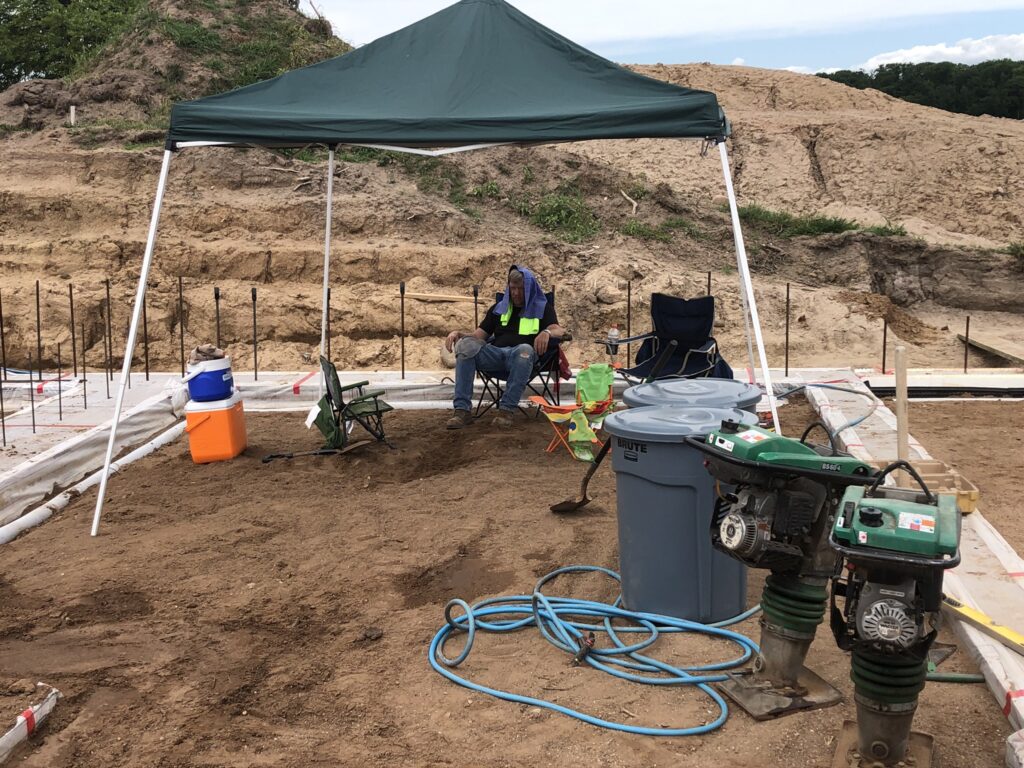
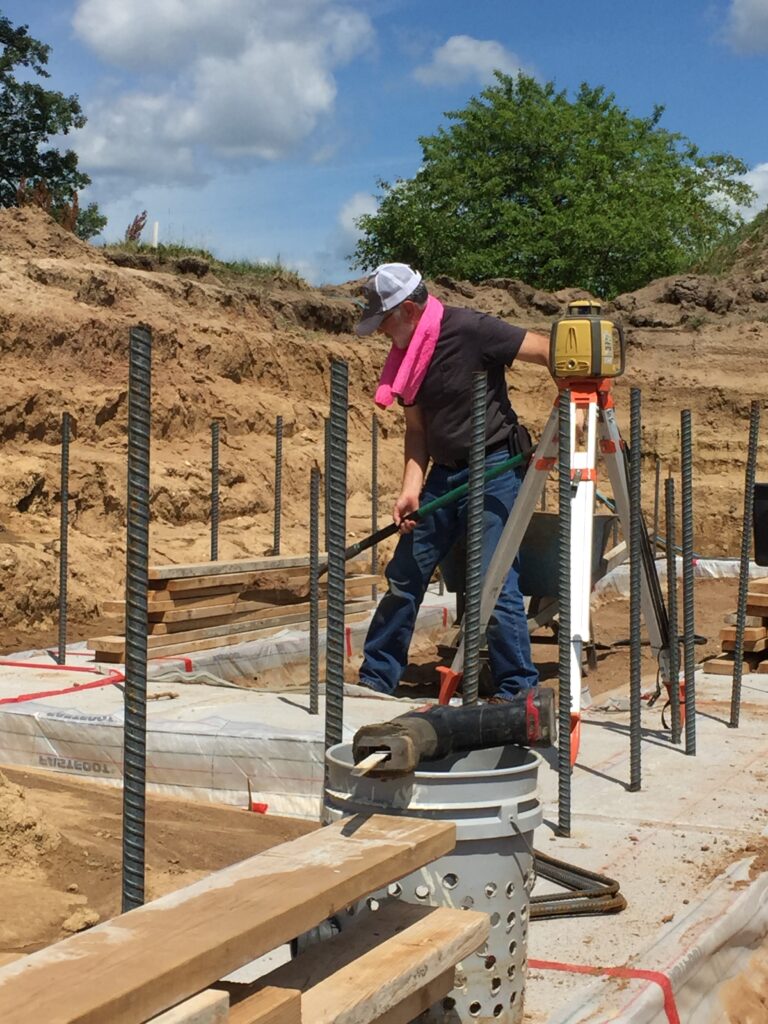
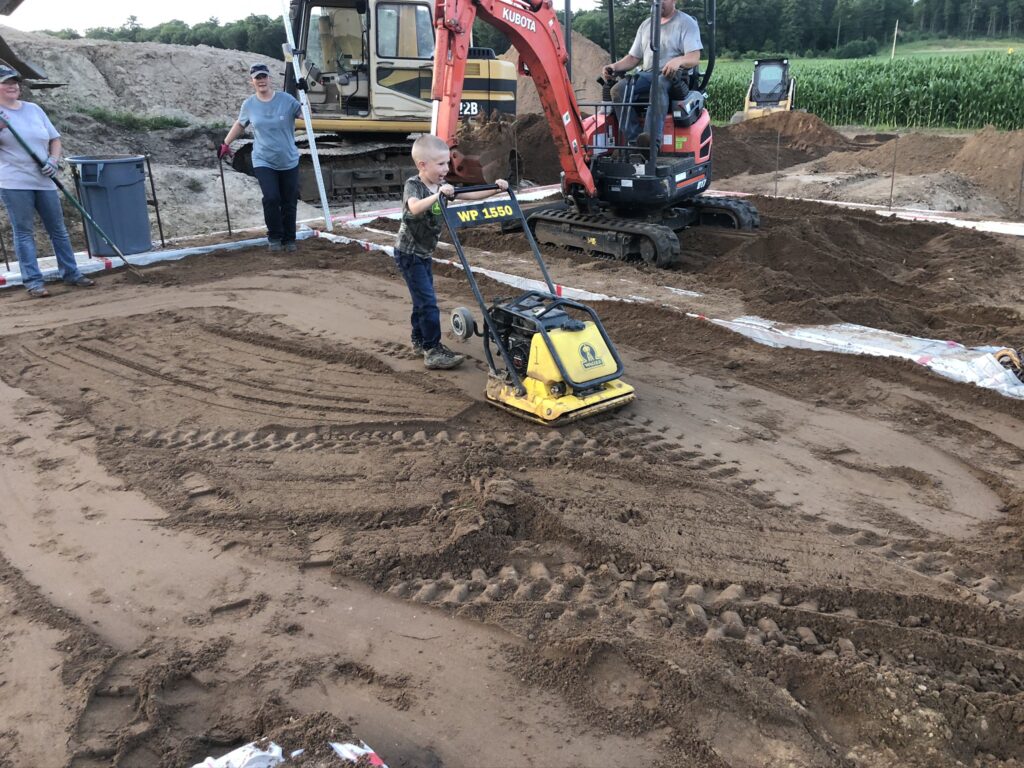
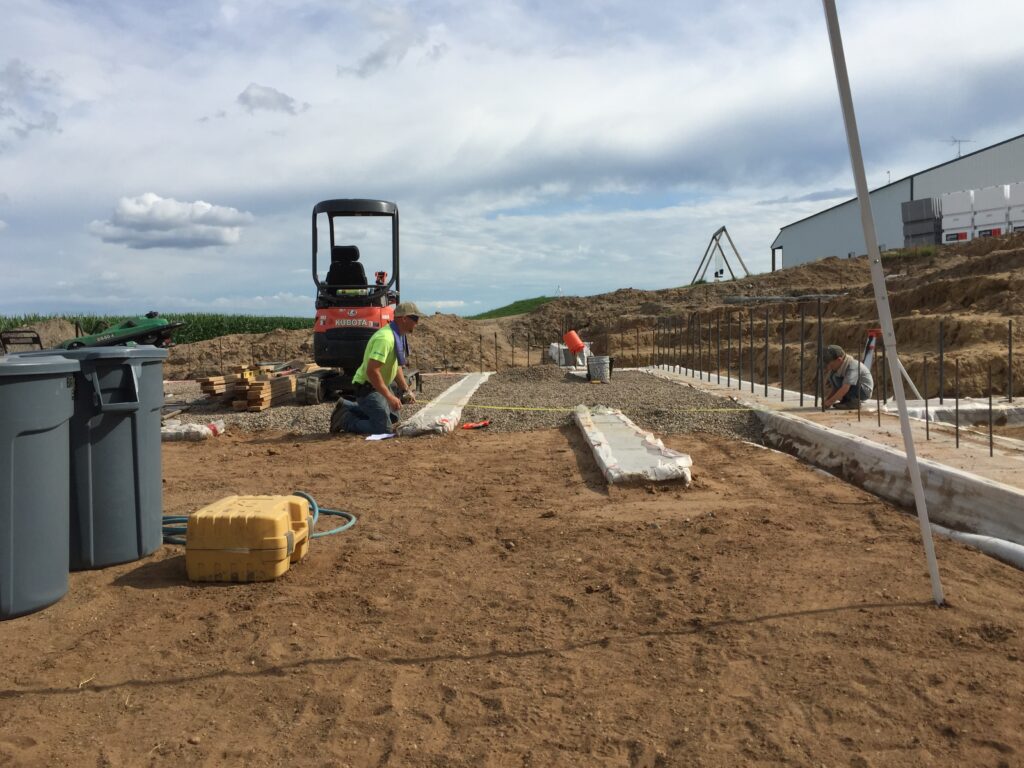
After the footings were poured, the next step was to pour and waterproof the foundation wall, backfill, and add rock. We also finished installing the piping to the septic, which was started when we were prepping the footings, and added drain tile. This step was pretty grueling because we did it in the middle of July and it certainly wasn’t a mild summer.
Once the foundation walls were poured, we applied a waterproofing called Mel-Rol. Mel-Rol is a flexible, bituminous (a substance derived from petroleum, coal, or natural deposits), waterproofing membrane that we applied to the inside of the foundation wall. It was a fairly easy product to work with, however, it was difficult to apply it on a hot summer day because it was sticky and black. So, we figured out that we needed to measure what length we needed, cut the sheets in the shop and keep them in a shaded area outside. Once you applied it to the wall then you needed to roll it on to make sure it was adhered to the wall completely. After the Mel-Rol was applied we then installed another waterproofing product over the Mel-Rol called DMX AG Foundation Wrap aka dimple. “DMX AG™ creates an air gap between wet soil and your basement wall, allowing the poured concrete walls to breathe. It also provides a clear negative side drainage path to disperse any ground moisture that might find its way behind the membrane. Wet soil never touches the wall next to your living space, thus reducing the chances of water infiltration into the basement” (DMX Membranes Limited). It comes in a large roll that can be easily cut with scissors. We secured it to the wall with screws and plastic washers.
After the waterproofing was installed, we were able to start backfilling the dirt. We used the laser level to level the dirt around the footings and the foundation walls leaving room for the rock. We used a combination of water, jumping jacks, and a plate tamper to compact the dirt. Then we added the rock so it was level with the footings and the top of the foundation walls. The rock is a code requirement for radon.
As you can see from the photos we had lots of help from family and we couldn’t have done it without them. We also made it through with the help of Frogg Toggs, which are a cooling towel that you wear around your neck, and the shade provided by a pop up canopy.
